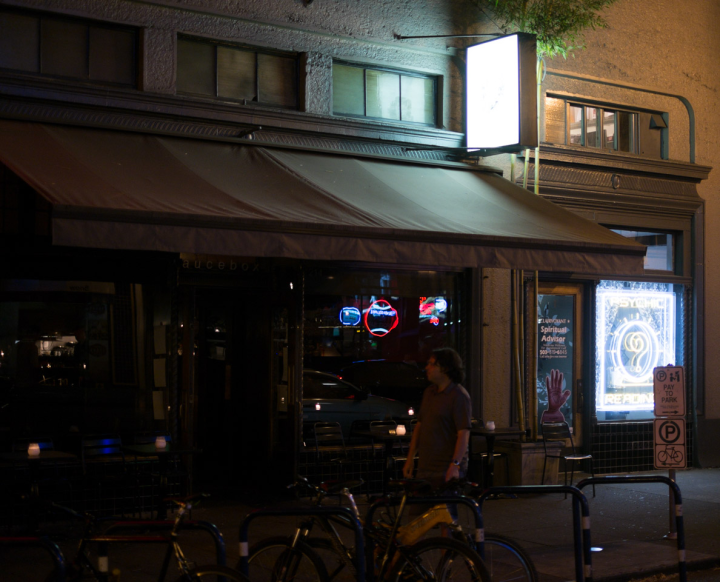
Good Raw Files

I’ve been switching back and forth quite a bit between my two “serious” cameras, the Pentax K-5 (excellent late-2010 tech) and the Fujifilm X-E1 (same, late-2012). They both have important virtues, but I’m starting to think the most important difference is raw-file quality. I have an example.
People who know all about raw files and JPEG conversion and so on can hop on past the next section.
Backgrounder: Formats and Spelling · There are two ways a camera can save its captured images. First is JPEG, a file format that dates back to the early nineties, and still offers a pretty good ratio between data compression and perceived quality. There is excellent interoperability between all the world’s JPEG producers and all the world’s image renderers.
Next, there are raw files, which is to say the actual Red/Green/Blue values coming off the pixels in the sensor in the back of your camera. For some idiotic reason the word is often spelled “RAW”; but not by me.
Unlike JPEG, raw files have lousy standardization: Canon, Nikon, and Fujifilm each have their own version. There is a sort of standard, DNG, produced by Adobe but apparently wide-open. Pentax cameras generate this natively.
The diversity turns out not to be a problem because the people who make photo-processing software just suck it up and read the native files. Which they might have to do anyhow, because it turns out that some of what you have to do to get good JPEGs from the raw data is specific to the camera model.
And the conversion is not just arithmetic; photo-processing gurus inveigh weightily about the faults and virtues of the JPEG-making software in cameras, and in software packages such as Lightroom and Aperture.
Since I’m digressing anyhow, I should mention that Google is presenting WebP as a JPEG alternative, but I have no opinion as to whether that’s a good idea.
But I Digress · Here’s a picture I took with the X-E1 very late on a Portland evening, after the OSCON drinking was over. It’s been cropped a little but is otherwise as it came out of the camera.
There’s a lot to dislike here; in particular, all the bright areas are more or less featureless white blobs. I pulled the raw version into Lightroom and asked it to ease off on the highlights. Hey-presto!
Look at the loads and loads of information that was lurking in those white blobs. Well, I did a little more than just ease off the highlights, I also hoisted the shadows up and the deep blacks down, gave the Contrast slider a little nudge, the Clarity slider a tiny one, and just barely touched the luminance noise. But, by the way, I went nowhere near the White-balance control, because with the Fuji sensor, well, I almost never need to.
And anyhow, it’s still not a great pic by any means. But it’s pleasant to look at and brings a nice evening with friends and cool geeks to mind. But I’ve never had a camera’s files yield such hidden riches before.
Comment feed for ongoing:
From: Ianiv (Jul 28 2013, at 17:25)
The sensor produces more detail in the brighter areas so as long as there is no clipping you can bring the levels down and get the details to show. For the same reason, if you try to always overexpose a bit, as long as there is no clipping, you can get more detail out of the darker areas and balance it all in Lightroom/aperture.
[link]
From: Greg Lehey (Jul 28 2013, at 21:17)
You might like to take a look at DxO Optics "Pro", which can get a lot more detail out of the images. Bring a fast computer.
[link]